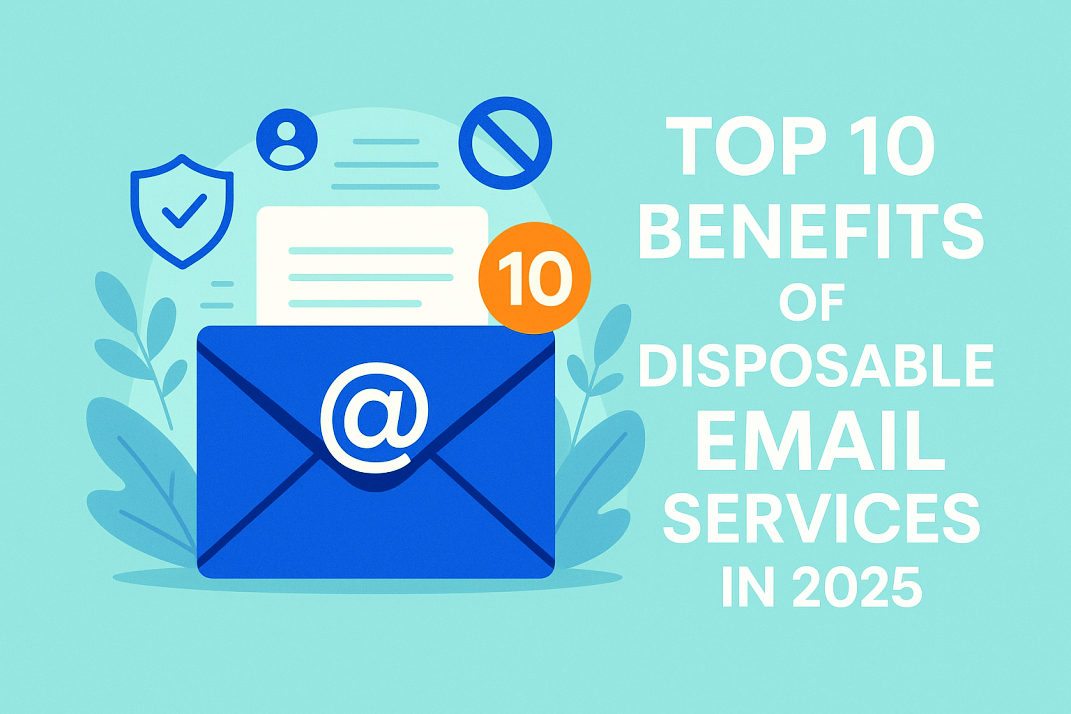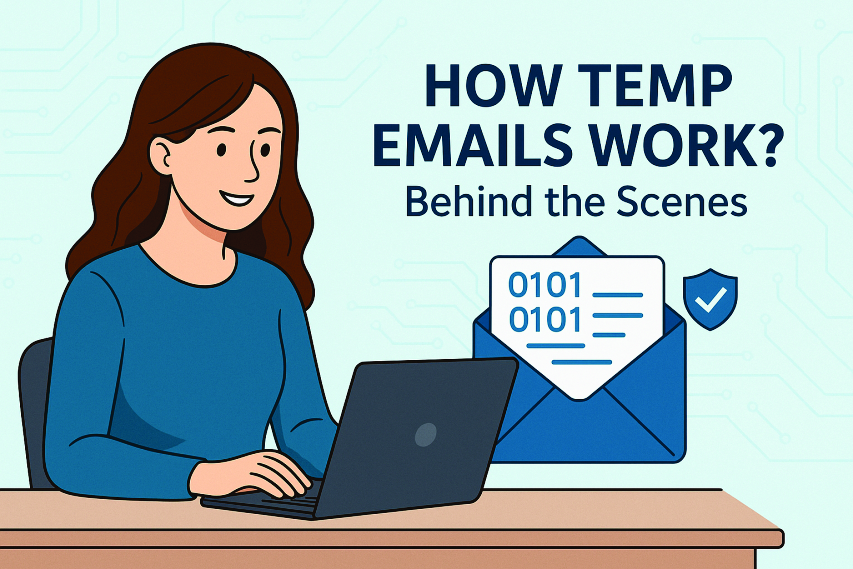The History of Temp Mail: From Niche Tool to Privacy Essential
In a world increasingly driven by digital communication, the need for privacy has evolved from a secondary concern to a mainstream priority. The internet, once perceived as a boundless platform for free information exchange, has gradually become a complex web of data harvesting, targeted advertising, and cyber threats. Amid this transformation, one humble yet powerful tool has steadily risen in relevance: disposable email services, often colloquially known as "Temp Mail." Initially dismissed as a quirky solution for the overly cautious, these tools have now become an indispensable part of the privacy-conscious user’s toolkit. But how did we get here? To understand the rise of Temp Mail, we must delve into its origins, explore its evolution, and uncover the societal shifts that have transformed it from a niche gimmick to a privacy essential.
The Birth of Disposable Email: Necessity Breeds Invention
The early 2000s marked a significant turning point in how users interacted with digital platforms. With the rapid proliferation of websites offering newsletters, downloads, free trials, and forums, users found themselves repeatedly prompted to provide email addresses. This seemingly innocent requirement quickly turned into a barrage of unsolicited emails, more commonly referred to as spam.
At first, internet users responded by creating secondary email accounts solely for such sign-ups. While this strategy provided some relief, it wasn't sustainable. Managing multiple inboxes became cumbersome and inefficient. That’s when the first disposable email services quietly emerged. These platforms offered temporary email addresses that could receive messages for a limited time before self-destructing, effectively allowing users to bypass the spam problem altogether.
Initially, adoption was limited. The general internet population was either unaware of such tools or skeptical about their legitimacy and usefulness. Moreover, early versions lacked user-friendly interfaces and often had reliability issues, deterring widespread use. However, for the tech-savvy few who understood the risks associated with disclosing personal information online, these services represented a clever workaround that addressed an increasingly pressing problem.
Early Adoption and Use Cases
The early adopters of disposable email services were primarily individuals who spent a significant amount of time online: developers, forum users, gamers, and digital marketers. These users understood that each email address given away was a potential entry point for spam, phishing attacks, or data mining. For them, using a temporary email address was not merely about convenience; it was about control.
Developers and QA testers, for example, often needed multiple email addresses to test user registration processes or email notification systems. Disposable email services provided a fast and effective solution. Similarly, internet forum users, wary of revealing their identity, found temporary email addresses to be a shield against unsolicited contact.
Even marketers started to use these tools to test competitors' email campaigns or sign up for services anonymously. This practice helped them gather competitive intelligence without revealing their identity or cluttering their professional inboxes. As word spread about the utility of these tools, more users began to see their value, albeit still within limited circles.
Technology Evolves: From Bare-Bones to Feature-Rich
As the user base for disposable email services expanded, so did the demand for improved functionality. Early platforms were often buggy, lacked encryption, and provided little to no customization. Recognizing the growing need, developers began to enhance the technical capabilities of these tools.
Newer versions started incorporating features like inbox refresh buttons, spam filters, and user-friendly interfaces. Some services even allowed for limited customization of the temporary email address, which helped users remember them for short-term use. Security also became a priority. While the primary function of these tools was to avoid spam, users increasingly began to expect basic protections against malicious content.
Moreover, the rise of mobile computing and app ecosystems further boosted the accessibility of disposable email. Developers rolled out mobile apps that allowed users to generate and monitor temporary email addresses on the go. This transformation made the services not just more robust but also more integrated into everyday digital behavior.
Social and Legal Catalysts for Growth
The rise of social media, coupled with the increased monetization of user data, brought privacy concerns to the forefront. People began to question how their information was being used and who had access to it. High-profile data breaches and scandals, such as the Cambridge Analytica incident, served as wake-up calls for millions. The once-passive internet user now actively sought tools to protect personal information.
Legislation also played a significant role. The introduction of data protection laws such as the General Data Protection Regulation (GDPR) in Europe and the California Consumer Privacy Act (CCPA) in the United States established new norms for data handling. These laws not only held companies accountable but also educated the public about their rights concerning digital privacy.
Suddenly, tools like disposable email services weren’t just about dodging spam; they became instruments of empowerment. They gave users the means to exercise control over their digital footprint. Signing up for a service no longer had to mean surrendering one's identity or personal data to unknown entities.
Cultural Shift: Privacy as a Mainstream Concern
As privacy became a talking point in mainstream media, the cultural perception of digital anonymity began to shift. What was once viewed as paranoia became recognized as prudence. People started to understand that every online action, from signing up for a newsletter to entering a giveaway, had implications for personal privacy.
This awareness triggered a surge in interest in privacy-focused tools. Browser extensions, VPNs, secure messaging apps, and yes, disposable email services became part of the average user’s digital hygiene toolkit. Online forums, tech blogs, and YouTube channels began to review and recommend these tools, pushing them further into the spotlight.
Interestingly, the adoption wasn’t limited to tech-savvy individuals anymore. Parents, freelancers, students, and even small business owners began to use temporary email addresses to manage online interactions more securely. The appeal was universal: keep your real inbox clean, your identity safe, and your digital life under control.
Integration with Other Privacy Tools
As disposable email tools matured, they started to integrate with broader privacy solutions. Some VPN providers, for instance, began bundling them with their services. Password managers incorporated temporary email generators to help users sign up for sites securely. This ecosystem approach amplified their utility and visibility.
At the same time, advancements in AI and machine learning allowed these tools to better detect spam and phishing attempts, further increasing their reliability. Users could now enjoy not just convenience but also enhanced protection. The best services began to offer multiple inboxes, domain choices, and even API access for developers needing automation.
This integration signaled a shift from standalone utility to embedded feature within a broader privacy infrastructure. No longer an isolated tool, disposable email became a key component of a multifaceted strategy for digital security.
The Modern-Day Temp Mail Experience
Today, using a disposable email service is as intuitive as opening a browser tab. The experience has been polished to the point where even first-time users can generate a temporary email address within seconds. With responsive interfaces, real-time message delivery, and robust spam filtering, the modern user enjoys a seamless, efficient solution.
Importantly, the narrative around these tools has evolved. They are no longer seen as tools for hackers or overly cautious users. Instead, they are recognized as practical, everyday solutions for anyone navigating the digital world. Whether you’re signing up for a one-time webinar, testing a platform, or entering a contest, using a temporary email address is now considered smart digital behavior.
Moreover, educational institutions, non-profits, and even government agencies have acknowledged their value. Workshops on digital literacy and cybersecurity often include modules on how to use disposable email tools. This institutional recognition further cements their role in the privacy landscape.
Challenges and Criticisms
Despite their growing popularity, disposable email services have faced criticisms. Some argue that they can be used for nefarious purposes, such as creating fake accounts or bypassing moderation on platforms. This concern has led certain websites to block domains associated with these services.
There’s also the issue of sustainability. Many of these platforms rely on ad revenue or donations, which can make long-term viability a challenge. Maintaining secure infrastructure, especially with increasing cyber threats, requires constant updates and investment.
Nevertheless, these challenges have not halted their momentum. Instead, they have pushed providers to innovate, improving both functionality and transparency. Premium versions with additional features and customer support have helped create viable business models that ensure continued service and development.
Looking Ahead: The Future of Disposable Email
As we look to the future, the role of disposable email services appears more critical than ever. With the rise of AI-generated phishing scams, deepfakes, and increasingly invasive data collection techniques, protecting one’s digital identity will only become more challenging.
In response, we can expect these tools to become even more sophisticated. Features like real-time threat analysis, temporary phone numbers, and encrypted messaging could become standard. Additionally, greater integration with operating systems and browsers could make them as ubiquitous as password managers.
Public awareness will also continue to grow. As new generations of digital natives come of age in a world saturated with online threats, education around privacy tools will be essential. Schools, universities, and workplaces will likely play a significant role in promoting best practices, including the use of temporary email addresses.
In conclusion, what began as a workaround for spam has transformed into a cornerstone of digital self-defense. The evolution of Temp Mail from a niche novelty to a mainstream necessity is a testament to the growing demand for online privacy. And as our digital lives continue to expand, this once-overlooked tool will undoubtedly play an even larger role in shaping how we protect our personal information online.
Final Thoughts
Looking back, it’s clear that the growth of disposable email has mirrored our broader journey as digital citizens. From a time when online privacy was barely a thought, to an era where it's one of our primary concerns, our tools have evolved with us. What was once considered excessive caution is now embraced as digital literacy. We live in a time where even our email habits say something about how much we value our security. And as cyber threats grow more complex and intrusive, our commitment to privacy must grow in equal measure.
Temp Mail, once a fringe solution, now symbolizes the shift toward greater digital self-awareness. It's more than just a way to avoid junk emails; it's part of a larger philosophy—one that champions autonomy, anonymity, and informed engagement with the digital world. As we step further into the future, this unassuming tool will continue to serve as a simple yet powerful ally in our ongoing pursuit of online freedom.



